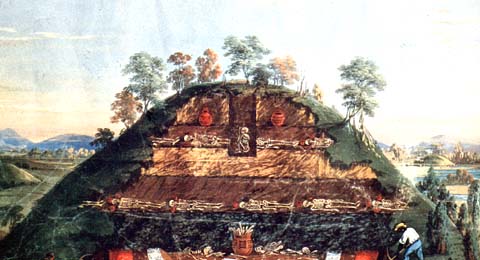Roger wrote:The truth is, I am not paid to do this, so I have to earn a living on the side.
Nor am I paid to do this.
If you think I am, you've been reading far, far too much Scratch.
Time spent on the internet, for me, is time away from researching, writing, editing, administrative duties, bishoping, family, my interests in art and music and literature and politics, and, when I'm teaching, from course preparation and paper-grading.
Roger wrote:The truth is you have years of experience and lot's of books and resources you can consult. I have the internet and Dale.
I haven't paid much attention to the Spalding theory for decades. And, truth be told, it's difficult for me to focus much interest on it now, either.
But I'll try.
Roger wrote:Which is sort of my complaint, with all due respect. I can put a 2008 Ford Taurus and a 55 Chevy Pickup in front of you and and say look I see some similarities here... they both have 4 wheels, they both have a steering wheel, they both have seats, they both have an engine, they both run on gasoline, etc, etc and you say "Well I'm sorry I just don't see it like that." Now you might be thinking, one's a Ford the other's a Chevy, one is a truck the other is a sedan, one is red the other blue... I don't know what you're thinking... but if all you say is: "I just don't see it" after I've pointed out the similarities, what I am to do with that?
My response would likely be to point to the scores if not hundreds of significant differences between them -- e.g., brakes, transmission, sound system, air conditioning, suspension, and so on and so forth -- and to suggest that your notion that the design of the 2008 Ford Taurus was copied from the 55 Chevy pickup needs a lot more evidence to back it up than is presently on offer.
Roger wrote:It seems to me, too, that it's very easy to abstract two agenda-driven lists of items from a pair of texts that are, in reality, very, very different, and, by presenting them side by side, consciously or unwittingly exaggerate the supposed similarities between the two documents. (Grant Palmer's absurd effort to link the Moroni story with E. T. A. Hofmann's Der goldne Topf, which was only made worse by Palmer's inaccuracies and his surreptitious re-ordering of the listed elements to make them correspond better, is a spectacular illustration of this error.) Like mikwut, I've always been much more impressed by the differences between Spalding's novel and the Book of Mormon, which I see as fundamental and deep, than by what I've always seen, and continue to see, as truly shallow, cherry-picked "similarities."
Well that is certainly consistent with how one would expect an LDS apologist to think, so you're certainly not offering any surprises.
Do you really not see the potential problem of a carefully chosen matched pair of lists that could be constructed in order to make two very different texts appear almost identical? Especially if, as with Grant Palmer's venture, the order of the lists is surreptiously altered so that they seem more similar still? Do you really think that's merely an "LDS apologist's" (possibly feigned) methodological concern?
Roger wrote:Since you can't offer much in the way of commentary on the similarities and prefer to discuss the differences, why should I be impressed with the differences?
Don't presume that I "can't" deal with the similarities. I'm simply trying to muster the enthusiasm to attempt to explain why what I think is transparently and immediately obvious ought to be obvious to you, as well. But it's actually rather hard to do that. I mean, if something instantly and transparently obvious to X isn't at all apparent to Y, X might find it very difficult to go much beyond that, especially when we're talking about something as subjective as judgments of "importance" or "significance."
Roger wrote:I don't think either Smith or Rigdon were dumb. I think they were a bit nervous about getting caught.
And I, by contrast, think the whole Rigdon/Spalding theory is pure fantasy, with extraordinarily little to recommend it but a whole lot of baseless conjecture.
Roger wrote:So we seem to have a fundamental difference in what we see as important with regard to these two texts.
Yes, and that's the problem. Judging what's significant or not is, essentially, a matter of taste. And, as the Latin saying has it, De gustibus non est disputandum.
http://en.wikipedia.org/wiki/De_gustibu ... isputandum
Roger wrote:One thing I would want to do, in this case, would be to quote as many of Spalding's actual words and as many of the Book of Mormon's actual words as possible.
We'll we're actually talking about two different things... two different sets of parallels... I DID write Book of Mormon in the title of this thread and I do believe there are parallels between the Book of Mormon and the Roman Story, but what I was specifically refering to earlier is the similarities between the Roman story and the Smith account of finding plates. For the time being, maybe we could focus on those similarities and move on to the Book of Mormon from there?
I don't know that we'll "move on from there" -- my very powerful lack of interest in the Spalding/Rigdon theory is real and unfeigned, and decades old -- but I'm willing to go through the short list of purported similarities that you've mentioned. (Just not right now. I didn't get down to the computer before 7:00 AM in order to spend the day on MDB.)
Roger wrote:And you still see nothing remarkable in that?
I see little or nothing significantly "close" in the purported parallels. I really don't.
